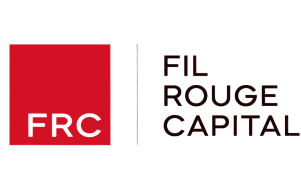

Introduction
As the fashion industry grapples with its significant environmental impact, sustainable materials are emerging as a beacon of hope. By embracing eco-friendly alternatives to traditional textiles, brands can substantially reduce their impact on the planet. In this article, we'll explore the positive environmental effects of sustainable materials, focusing on the transformative potential of plant-based options like those developed by Sabant.
Reducing Waste and Pollution
One of the most significant ways sustainable materials benefit the environment is by reducing waste and pollution. Traditional fashion production is notorious for generating vast amounts of waste, from fabric scraps to toxic chemicals used in dyeing and finishing processes.
In contrast, sustainable materials often utilize waste from other industries, giving new life to resources that would otherwise end up in landfills. Sabant's Gin Skin™ and Beer Skin™, for example, are crafted from the byproducts of alcohol production, transforming waste into high-quality, eco-friendly leather alternatives.
By embracing circular and zero-waste production models, brands can significantly reduce their environmental footprint and contribute to a more sustainable future. Some key strategies for waste reduction include:
Upcycling: Repurposing waste materials and transforming them into new, high-value products.
Closed-loop recycling: Collecting and recycling post-consumer waste to create new materials, minimizing the need for virgin resources.
Zero-waste design: Creating garments and accessories that generate minimal waste during the production process, often through the use of precise pattern-cutting and material optimization.

Conserving Water and Energy
Water conservation is another critical benefit of sustainable materials. Traditional textile production, particularly in the case of natural fibers like cotton, can be incredibly water-intensive. The processing and dyeing of fabrics also require substantial amounts of water and energy, contributing to resource depletion and greenhouse gas emissions.
Sustainable materials, on the other hand, often have a lower water and energy footprint. Plant-based alternatives like those developed by Sabant require minimal water in their production process, and their innovative processing methods prioritize energy efficiency.
Some examples of water and energy-saving innovations in sustainable fashion include:
Waterless dyeing: Technologies that use supercritical carbon dioxide or foam to dye fabrics, reducing water consumption by up to 90%.
Low-impact fibers: Materials like organic cotton, hemp, and linen that require less water and energy to produce compared to conventional options.
Renewable energy: The use of solar, wind, and other renewable energy sources to power production facilities, reducing reliance on fossil fuels.

Promoting Biodiversity and Regenerative Practices
Sustainable materials can also have a positive impact on biodiversity and promote regenerative agricultural practices. Many plant-based alternatives, such as hemp and organic cotton, are grown using methods that prioritize soil health, minimize the use of harmful chemicals, and support local ecosystems.
By choosing sustainable materials, fashion brands can contribute to the preservation of biodiversity and the promotion of regenerative practices. Some examples of biodiversity-friendly and regenerative initiatives in the fashion industry include:
Agroforestry: Integrating trees and other perennial plants into agricultural systems, providing habitat for wildlife and sequestering carbon.
Permaculture: Designing agricultural systems that mimic natural ecosystems, promoting biodiversity and regenerating soil health.
Regenerative grazing: Managing livestock in a way that promotes soil health, biodiversity, and carbon sequestration.
Reducing Greenhouse Gas Emissions
The fashion industry is a significant contributor to global greenhouse gas emissions, with estimates suggesting that it accounts for 8-10% of total emissions worldwide. Sustainable materials can play a crucial role in reducing the industry's carbon footprint by minimizing the environmental impact of production processes and promoting more efficient use of resources.
Plant-based materials like Sabant's Gin Skin™ and Beer Skin™ have a lower carbon footprint compared to traditional leather, as they eliminate the need for resource-intensive animal farming and avoid the use of harmful chemicals in the tanning process. By opting for sustainable materials, brands can significantly reduce their greenhouse gas emissions and contribute to the fight against climate change.
Some other strategies for reducing greenhouse gas emissions in the fashion industry include:
Energy efficiency: Implementing energy-efficient technologies and practices in production facilities, such as LED lighting and heat recovery systems.
Renewable energy: Transitioning to renewable energy sources like solar and wind power to reduce reliance on fossil fuels.
Sustainable transportation: Optimizing supply chain logistics and utilizing low-carbon transportation methods, such as electric vehicles and cargo bikes.
Consumer Education and Engagement
Raising consumer awareness about the environmental impact of fashion and the benefits of sustainable materials is essential for driving change in the industry. By educating consumers about the positive effects of choosing eco-friendly options, brands can empower them to make more informed and responsible purchasing decisions.
At Sabant, we believe in the power of transparency and storytelling to engage consumers and inspire them to embrace sustainable fashion. By sharing the journey of our materials from gin distillery to finished product, we aim to foster a deeper understanding and appreciation of the innovative processes and environmental benefits behind our plant-based alternatives.
Some effective strategies for consumer education and engagement include:
Transparent labeling: Providing clear and detailed information about the materials, production processes, and environmental impact of products.
Storytelling: Sharing the unique stories behind sustainable materials and the positive impact they have on people and the planet.
Collaboration: Partnering with influencers, educators, and organizations to raise awareness about sustainable fashion and promote eco-friendly alternatives.
Conclusion
The adoption of sustainable materials in the fashion industry has the potential to create a significant positive environmental impact. From reducing waste and pollution to conserving water and energy, promoting biodiversity, and reducing greenhouse gas emissions, eco-friendly alternatives like plant-based leather offer a more responsible and resilient path forward.
At Sabant, we're committed to being part of the solution, crafting innovative sustainable materials that showcase the incredible potential of plant-based alternatives. By sharing our story and collaborating with like-minded brands and consumers, we aim to inspire a more sustainable and compassionate fashion industry.
As awareness grows and more brands embrace sustainable materials, we can look forward to a future where fashion is a force for good, contributing to the well-being of people and the planet. By making conscious choices and supporting eco-friendly initiatives, we all have the power to shape a more sustainable and responsible fashion ecosystem.








.png&w=3840&q=75)







